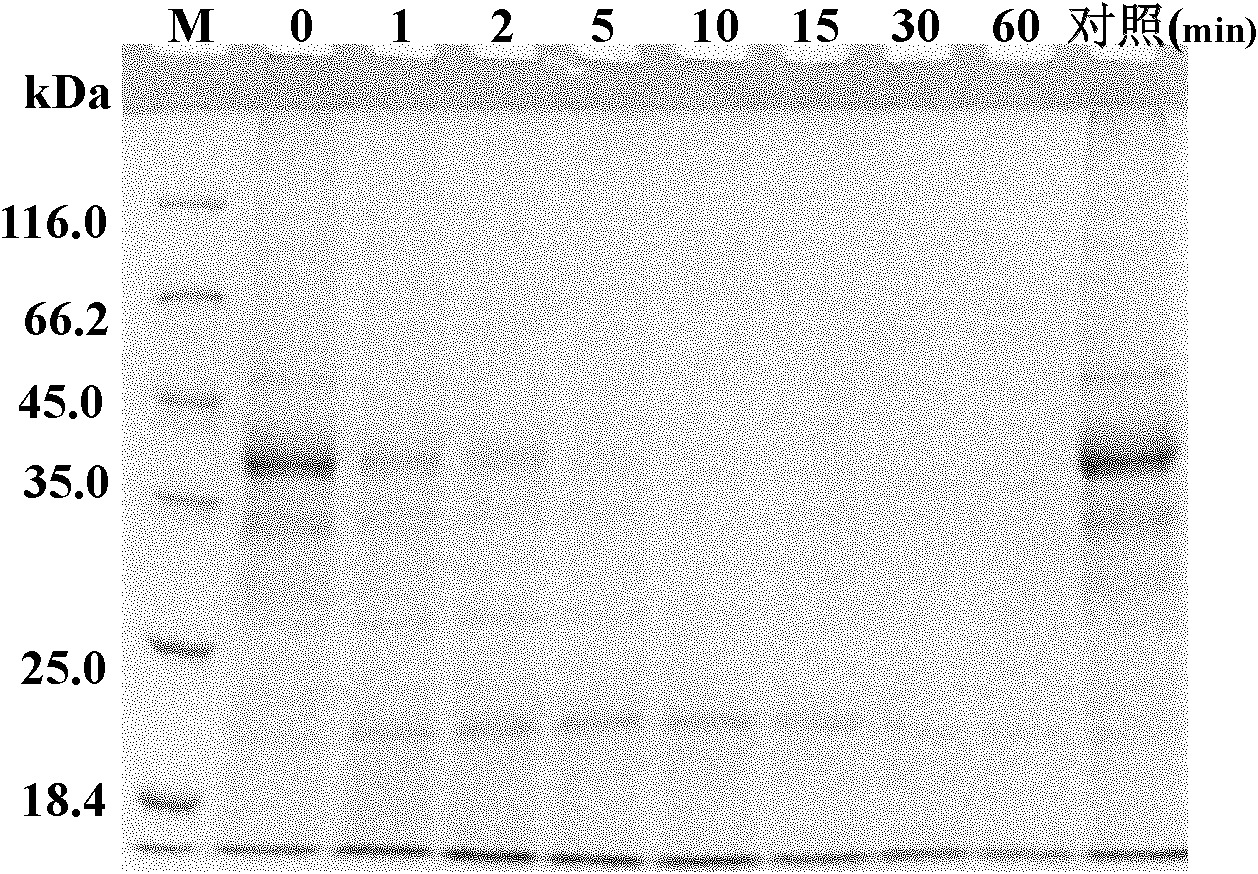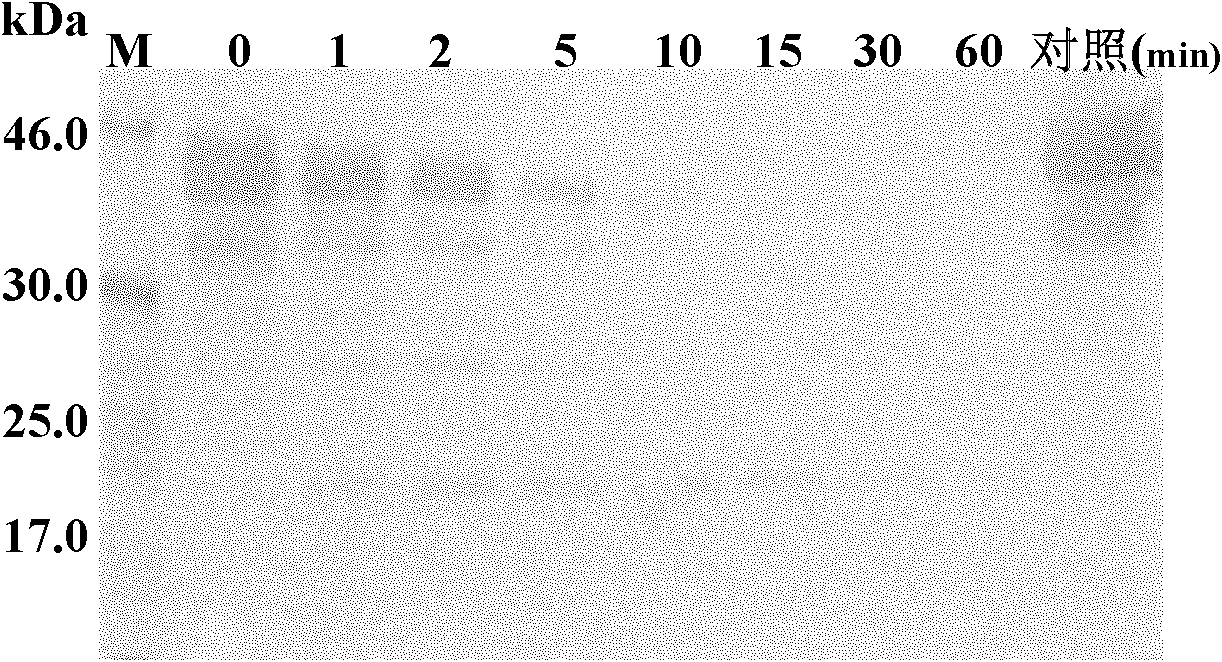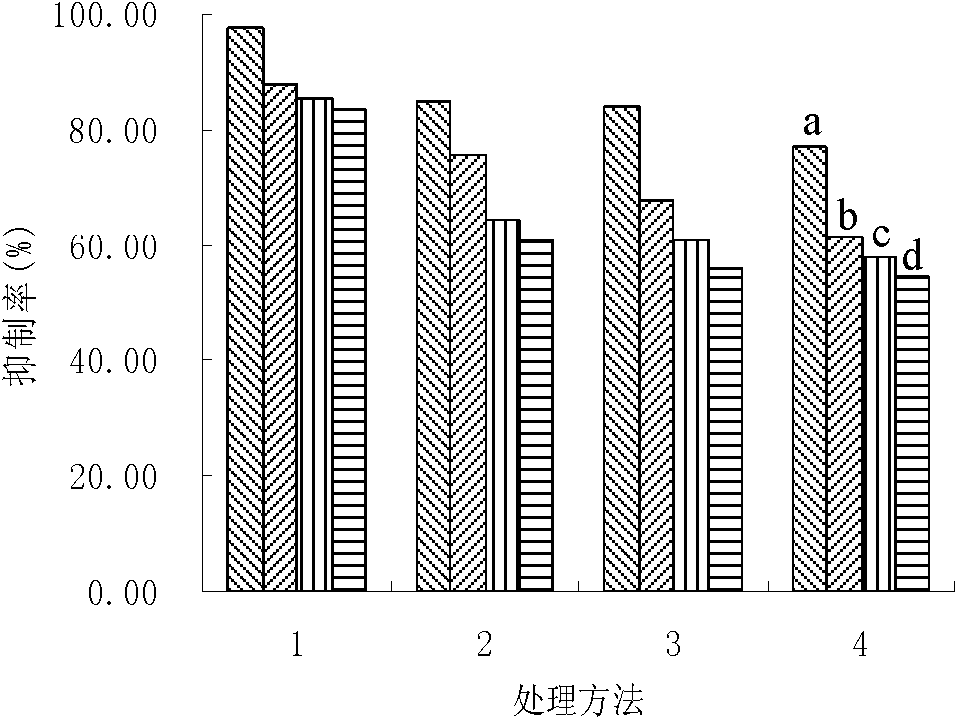Processing method of hypoallergenic canned crab meat
A hypoallergenic, processing method technology, applied in the field of food processing, can solve problems such as allergic reactions and endangering human health, and achieve the effect of low allergenicity, reduced allergenicity, and simple and reasonable process
- Summary
- Abstract
- Description
- Claims
- Application Information
AI Technical Summary
Problems solved by technology
Method used
Image
Examples
Embodiment 1
[0031] Example 1: Processing method of hypoallergenic canned crabmeat
[0032] A processing method of hypoallergenic canned crab meat, which comprises the following steps:
[0033] (1) Pretreatment of whole crabs: use live crabs or frozen crabs as raw materials, and require that the raw materials have no mechanical damage, no pollution, no peculiar smell, wash the mud and dirt attached to the crab body with clean water, and remove the crab cover shell , use a stainless steel knife to remove the gills and navel of the crab, and then clean the crab body with ice water;
[0034] (2) Steaming: put the processed whole crab into a steamer, and steam at a high temperature of 100°C for 15 minutes;
[0035] (3) Cooling, refrigerating, splitting and removing meat: the boiled cooked crabs are cooled to room temperature (until no steam emerges from the surface), and then sent to -4~0°C refrigerators to cool down and refrigerated; the refrigerated cooked crabs use special The stainless s...
Embodiment 2
[0042] (10) Refrigeration of finished products: The finished products with complete packaging are quickly sent to a freezer at -4 to 0°C for storage. Embodiment 2: In vitro simulated gastric juice digestion of crabmeat crude extract in canned crabmeat
[0043](1) Preparation of crab meat crude extract in canned crab meat. Get the crabmeat in the canned crabmeat of finished product and mash in 4 times volume (v / w) of ice-cold 10mmol / L phosphate buffer (pH 7.0) (containing 3% Nacl, w / v), repeat twice. The homogeneous solution was heated in a boiling water bath for 15 minutes, and after cooling, it was centrifuged at 8000 g for 20 minutes, and the supernatant was the crude extract of crab meat.
[0044] (2) Simulate gastric juice digestion in vitro. Pig pepsin participated in the simulated gastric juice digestion experiment, and the pepsin enzyme activity was 160U / mg protein. In 1mL simulated gastric juice (0.063mol / L HCl, pH 1.2, containing 2mg / mL NaCl) reaction system, the r...
Embodiment 3
[0046] Example 3: Inhibition ELISA of crab allergen - tropomyosin digest
[0047] Plate 1: Dilute the crude extract of crab meat with the coating solution, coat it on a 96-well microtiter plate, coat each well with 200ng, 100μL / well, seal it with tape, and place it at 4°C for 16h. The next day, the liquid in the well was poured off, patted dry, and washed 5 times with TBST. Then add 5% skimmed milk and block at 37°C for 2h. Plate 2: Take 30 μL of serum from patients with crab allergy (1:10 diluted with 1% skimmed milk) and the same amount of allergen protein digestion products (digestive enzymes are pepsin, trypsin, and chymotrypsin) and digested for 1 hour, 4 hours, and 1 hour respectively. Products after 4 hours) and undigested allergen protein were mixed and incubated, allergen protein digestion product was used as an inhibitor, each digestion product was diluted 1:10 with 1% skimmed milk as diluent, 37°C, competition reaction for 1 hour. Pour off the skimmed milk in the ...
PUM
 Login to View More
Login to View More Abstract
Description
Claims
Application Information
 Login to View More
Login to View More - R&D
- Intellectual Property
- Life Sciences
- Materials
- Tech Scout
- Unparalleled Data Quality
- Higher Quality Content
- 60% Fewer Hallucinations
Browse by: Latest US Patents, China's latest patents, Technical Efficacy Thesaurus, Application Domain, Technology Topic, Popular Technical Reports.
© 2025 PatSnap. All rights reserved.Legal|Privacy policy|Modern Slavery Act Transparency Statement|Sitemap|About US| Contact US: help@patsnap.com



